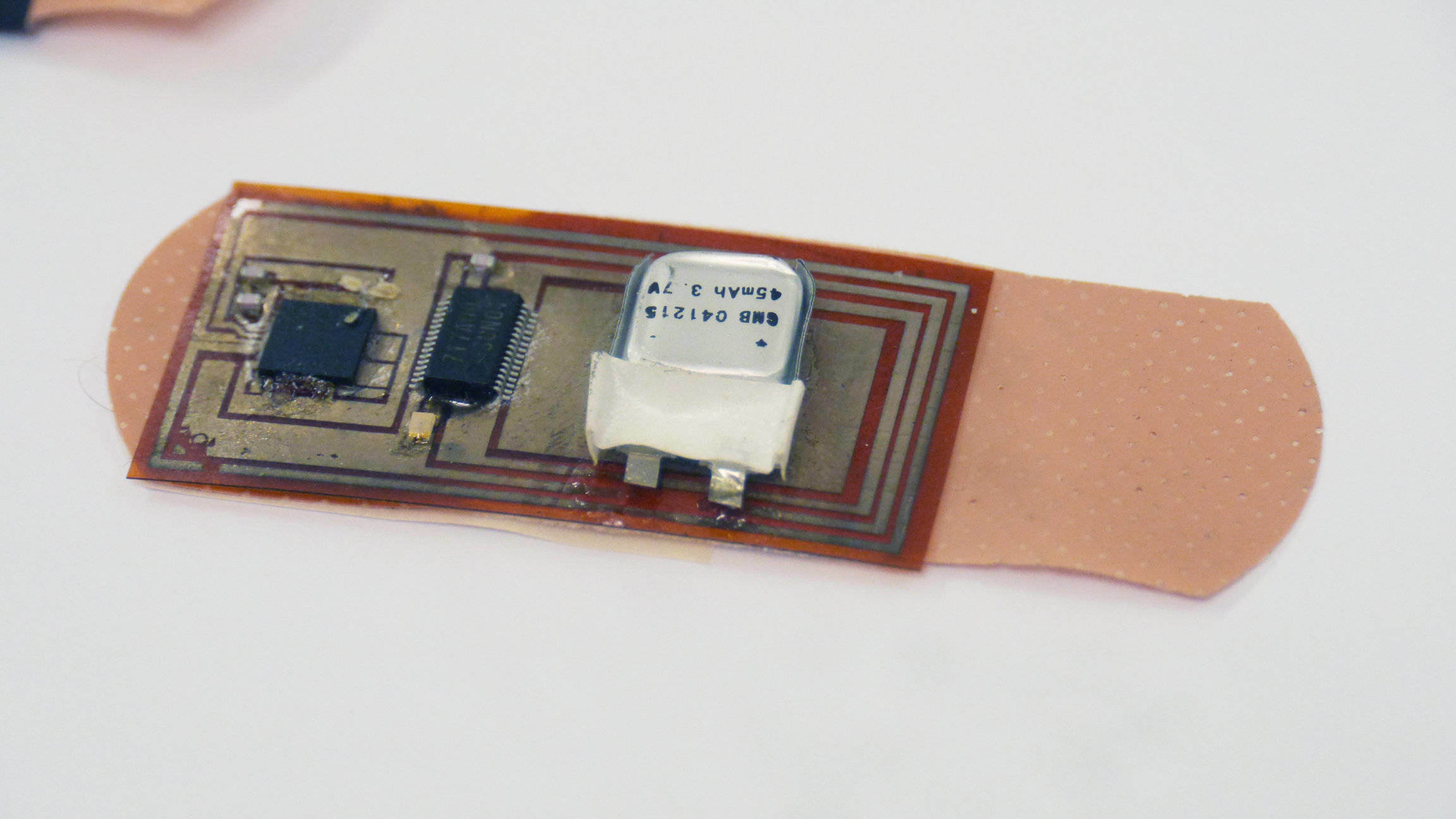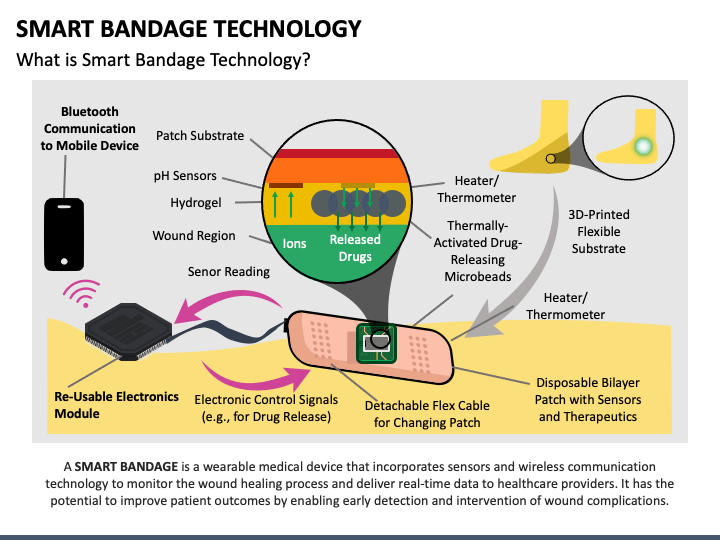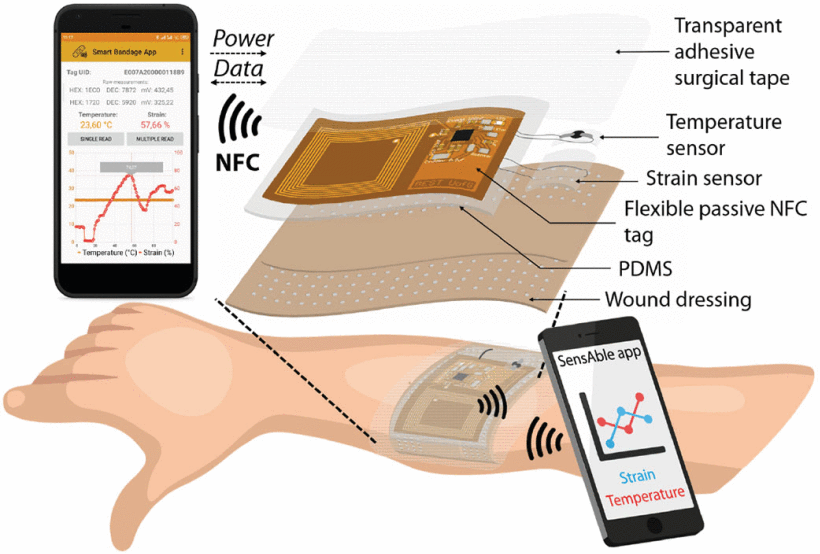Pharma Sahi Daam App: Revolutionizing Medicine Price Transparency in India
What are Smart Bandages?
In the realm of medical technology, one of the most intriguing innovations to emerge in recent years is the concept of "smart bandages." These are not your typical bandages; they represent a fusion of biology, technology, and pharmacology, designed to revolutionize how we manage wound care.
Understanding Smart Bandages
Smart bandages go beyond the traditional function of protecting wounds from environmental contamination. These advanced devices are embedded with technology that enables active monitoring and management of the wound healing process. They are equipped with sensors that can assess various parameters such as pH levels, temperature, and moisture—the key indicators of wound health.

The Technology Behind Smart Bandages
Smart bandages use a combination of sensors, electronics, and drug delivery systems. These components work together to deliver real-time data about the wound environment. For example, sensors can detect changes in moisture level, which is crucial because both excessively dry and overly moist wounds can delay healing. By monitoring these parameters, smart bandages can help ensure that the wound environment is kept optimal for faster healing.
Sensors and Electronics
The sensors embedded in smart bandages are capable of monitoring physiological factors such as temperature, pH, and moisture levels. Some smart bandages also include sensors for detecting bacterial infections by identifying specific biomarkers. This data is transmitted wirelessly to a smartphone or computer, allowing healthcare providers to monitor the wound without removing the bandage.
Drug Delivery Systems
What sets smart bandages apart is their ability to not only monitor wounds but also respond to the data they collect. They can be equipped with drug delivery systems that release medication directly into the wound as needed. This targeted approach can be used to administer pain relievers, antibiotics, or growth factors, depending on the wound’s condition.

How do Smart Bandages Transmit Data Wirelessly?
Smart bandages transmit data wirelessly through various technologies, including:
- Wireless Connectivity: Smart bandages are integrated with wireless connectivity, enabling them to transmit wound data to healthcare providers without the need for frequent in-person visits. This allows for remote monitoring and real-time updates on wound conditions.
- RFID Technology: European researchers have developed RFID-enabled smart bandages that wirelessly transmit data regarding the healing process of a wound, based on the presence of specific molecules or conditions like pH levels or temperature.
- Wireless Data Transmission: Smart bandages can transmit gathered data wirelessly to a nearby computer, tablet, or smartphone for review by the patient or a medical professional. This feature is particularly beneficial for remote patient monitoring and reducing the need for frequent in-person visits.
These wireless transmission capabilities enable smart bandages to provide real-time updates on wound conditions, facilitating more accurate assessments and timely interventions, and improving patient outcomes.
Key Features of Smart Bandages
- Embedded Electronics and Medication: Unlike traditional bandages, smart bandages contain flexible and stretchy polymers with embedded electronics and medication. This allows for real-time monitoring and targeted treatment of wounds.
- Wireless Power and Data Transmission: Smart bandages can draw power wirelessly from a nearby source, enabling them to transmit data to nearby devices such as computers, tablets, or smartphones. This allows for remote monitoring and real-time updates on wound conditions.
- Multi-Functional Response: Smart bandages can respond in three ways:
- Data Transmission: They can transmit gathered data wirelessly to medical professionals for review.
- Medication Delivery: They can deliver antibiotics or other medications directly to the wound site to treat infections.
- Electrical Stimulation: They can apply low-level electrical fields to stimulate tissue growth and accelerate healing.
- Improved Healing: Smart bandages have been shown to improve wound healing in animal models and mice, with faster healing rates and increased new blood vessel formation compared to standard wound dressings.

Applications and Advantages
The primary application of smart bandages is in the management of chronic wounds, such as ulcers (diabetic, venous, pressure), and surgical wounds, where continuous monitoring can significantly enhance outcomes. They are particularly beneficial in the following scenarios:
- Chronic Wound Care: Smart bandages can significantly improve the treatment of chronic non-healing wounds, which are a major healthcare challenge and a leading cause of limb amputation.
- Remote Patient Monitoring: Smart bandages can be used for remote patient monitoring, enabling medical professionals to keep track of patients' wound conditions and adjust treatment plans accordingly.
- Customized Treatment: By gathering data on the patient's wound, smart bandages can facilitate individualized wound care, improving patient outcomes and reducing healthcare costs.
- Postoperative Care: Smart bandages can help reduce the risk of surgical site infections by providing continuous monitoring and timely antibiotic delivery.

Future Directions
The future of smart bandages looks promising with ongoing advancements in nanotechnology, biotechnology, and materials science. Researchers are exploring the integration of even more sophisticated sensors that could analyze genetic material or cellular changes at the wound site. This could lead to earlier detection of complications and even more personalized wound care strategies.
- Human Trials: Future research will focus on testing smart bandages on human patients, whose therapeutic needs may differ from those of lab animals.
- Cost Reduction and Scalability: To make smart bandages more accessible, researchers are working on reducing costs and scaling up production to make them more affordable for widespread use.
- Integration with AI and IoT: Smart bandages are poised to integrate with artificial intelligence (AI) and the Internet of Things (IoT) to further enhance their capabilities and improve patient care.
Moreover, as the technology matures, we can expect smart bandages to become more affordable and widely available, making them a standard part of medical care.
Conclusion
Smart bandages represent a significant leap forward in medical technology, offering the potential to transform wound care. By integrating sensing, drug delivery, and data transmission capabilities, these bandages can not only speed up healing times but also improve the quality of life for patients with chronic wounds. As technology advances, smart bandages could soon become the new norm in wound management, reflecting an exciting intersection of technology and healthcare.












